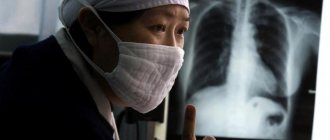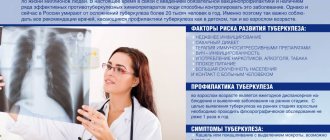How often does a person find himself in anxious tension? And he himself does not understand what is happening to him. There are no visible reasons for fear. But there is a condition. The body seems to be screaming about something: the head is spinning, the blood pressure is jumping, the heart is pounding, the stomach is cramping, the hands are sweating, memory and attention are deteriorating. There is a swarm of thoughts in my head about something inevitable: illness, disaster, punishment.
Such conditions are familiar to many. Everyone remembers the exam, before which there is growing anxiety. A situation of evaluation or uncertainty causes anxiety. And in these situations it is natural.
But increasingly, anxiety arises for no apparent reason. And if everything is clear with fear, for example, when a person is afraid of dogs and avoids them. He is aware of his fear and the object (the dog) or the reason for this fear (it may bite), which means he knows how to protect himself. With anxiety, everything is much more complicated; it has no specifics, it just exists. A person feels it, but doesn’t know what to do with it. And more often he simply doesn’t realize it.
Anxiety can occur as a result of brain injury, drug use or medication use. And also, as a result of psychological trauma, anxiety becomes a certain pattern according to which a person acts or reacts to any situation that traumatizes his psyche.
For example, a child is very afraid to do something not in accordance with the requirements and expectations of a Significant Adult because the parent has strict rules and strong negative reactions to failure to comply with these rules. To stay in contact, the child has to follow them. Adapting to the requirements of the parents, their attitudes become his own requirements for himself. In the past, it was the fear of the parent’s reaction, their dislike or punishment. Today there is anxiety about doing something less than perfectly. At the same time, a person himself cannot let go of these rules, without understanding why. His anxiety is now inexplicable and constant.
Constant internal tension greatly reduces the quality of life, the increasing physiological states of the heartbeat are so frightening that it seems that you can die. You cannot die from fear and anxiety, but you should pay attention to your condition. With unreasonable fear and anxiety, the reasons may be as follows:
Generalized anxiety disorder: persistent nervousness and worry about small things that are usually visible to others and last for 6 months or more. Begins in adolescence and intensifies with age.
Obsessive-compulsive disorder: obsessive thoughts and fears that are accompanied by compulsive actions that do not bring relief. There is obsessive-compulsive neurosis - a person indomitably pursues memories that reproduce a traumatic situation.
Phobias: irrational fear of anything, even ordinary things. Accompanied by uncontrollable panic and physical manifestations.
Panic attack: a painful and sudden attack of panic, which is accompanied by fear of death and vivid somatic symptoms. Regular occurrence of panic attacks means the development of panic disorder.
Post-traumatic stress disorder: occurs after a severe traumatic situation and is accompanied by high levels of anxiety and avoidance of situations.
These are the most common examples, but pathological anxiety can be a symptom of other disorders or a consequence of unsuccessful management of stress.
It is difficult for a person to live in constant stress. If you are experiencing causeless anxiety and fear, you can help yourself in the following ways:
1. Try to relax and feel your body. List the signs of your anxiety, do not run from this feeling, but accept it.
2. Do a few breathing exercises - they will help you calm down quickly. Take several deep breaths, exhaling as relaxed as possible. It is better to breathe by holding your breath in a count. Several cycles of such exercises normalize the condition.
3. Learn to enter a resourceful state. By this term, experts mean a sense of personal strength. You should feel that you have enough internal resources to solve the problems facing you at the moment. Try to remember the last time you felt this way. Return to that moment mentally or reproduce the situation in life. Each person has his own source of strength and joy. This could be meetings with loved ones, doing a favorite activity or sport, communicating with animals, walking in the forest, visiting a bathhouse and much more. Be sure to set aside time to do things that make you happy. This will reduce feelings of anxiety.
4. Try to imagine your body and determine the place where the anxiety is located. Take a pencil in your hand, and then mentally draw a line from your anxiety to it. Then draw your feeling. There is no need to control or analyze what is happening, just let your hand move on its own. The drawing must be torn or burned. This exercise allows you to relieve tension at a specific moment.
5. Be sure to review your work schedule. It is necessary to allocate time for proper rest and sleep. Particular attention should be paid to the diet.
6. Try to protect yourself from negative information. Avoid watching TV shows and movies with a dark, negative tone.
7. It is necessary to realize and accept the fact that a person cannot fully control everything that happens around him. You need to learn to trust the people around you. If anxiety is caused by situations that you cannot influence, then you need to change your attitude towards it.
8. Get rid of the habit of always expecting the worst. As soon as negative thoughts begin to appear in your head, you need to tell yourself: “Stop!” But there is no need to protect yourself from these thoughts, but you need to rethink them. You should separate reality and frightening fantasies.
9. Switch the train of your thoughts from internal to external, find in the room where you are 5 blue objects, 3 round objects, or simply clench and unclench your fists with force 5-6 times. This way, the focus of attention will shift from internal thoughts to sensations in the body or external signs of the place where you are.
By following these recommendations, you can cope with anxiety on your own. But this requires sufficient willpower and a desire to change your life for the better. If this does not work out, you should seek help from professional psychologists.
In-person psychological assistance can be obtained at social service institutions at your place of residence. In addition, you can take advantage of remote help from a psychologist by calling the Unified Social and Psychological Service “Helpline” in Khanty-Mansi Autonomous Okrug - Ugra at 8-800-101-1212, 8-800-101-1200 (anonymously, free, around the clock).
Pulmonary tuberculosis
Which doctors should I contact?
Tuberculosis is treated by phthisiatricians, but with the first complaints they most often turn to a general practitioner, pediatrician or pulmonologist, who, after an examination and diagnostic measures, will recommend a consultation with a phthisiatrician.
Treatment of pulmonary tuberculosis
The success of treatment largely depends on early diagnosis of the disease. Tuberculosis therapy is long-term and ranges from 4 months to several years.
Stopping medication on your own, skipping or reducing the dosage can cause resistance, that is, resistance of mycobacteria to antibiotics. During treatment, you must stop smoking and drinking alcohol.
Tuberculosis therapy involves a combination of several antibacterial drugs. Basically, all medications are taken in tablet form, but at the onset of the disease or in severe cases they require intravenous administration.
Tuberculosis treatment is carried out both at home and in a specialized hospital. Hospitalization is indicated for the initial detection of tuberculosis, for the treatment of severe forms of tuberculosis and for surgical treatment of pulmonary tuberculosis.
During treatment for tuberculosis, it is very important to eat well, getting the required amount of calories, vitamins and nutrients from food.
The calorie content of food should be 10% higher than with a normal lifestyle. Dairy products, lean meat, fish, and nuts are rich in protein, which is necessary to strengthen the immune system. Be sure to include vegetables, herbs, and whole grains in your menu. You should avoid fast food, fatty, smoked foods, sugar and sweet carbonated drinks.
Complications
Nonspecific complications characteristic of many pulmonary diseases include hemoptysis, pulmonary hemorrhage, and spontaneous pneumothorax. Spontaneous pneumothorax is the entry of air into the pleural cavity due to damage to lung tissue. The presence of air in the pleural cavity compresses the lungs and interferes with the normal breathing process. Cases have been described where the formation of bronchopleural fistulas leads to pneumothorax.
Rare but dangerous complications include: atelectasis (collapse of part of the lung, which ceases to participate in gas exchange and the breathing process), lung abscess (formation of an abscess in the lung tissue), amyloidosis of internal organs (as a result of a long-term inflammatory process, protein metabolism is disrupted in organs amyloid protein begins to be deposited, as a result of which their normal functioning is disrupted), chronic pulmonary failure.
Specific complications characteristic of pulmonary tuberculosis include: tuberculosis of the bronchi, trachea, larynx, root of the tongue; tuberculous pleurisy; tuberculous empyema is an accumulation of pus in the pleural cavity.
Prevention of pulmonary tuberculosis
Specific prevention includes vaccination.
Vaccination is carried out for newborn children in the maternity hospital on the 3rd–7th day in the absence of contraindications.
The vaccine is administered intradermally, after which a local tuberculosis process is formed, which is not dangerous to general health. Subsequently, the body develops specific immunity against mycobacteria. This means that a vaccinated child with good post-vaccination immunity, when encountering mycobacteria, either does not become infected or suffers a mild infection.
Immunity acquired after BCG vaccination lasts an average of 5 years. Repeated vaccinations are carried out at 7 and 14 years of age.
Prevention of tuberculosis in adults includes annual medical examination with fluorography of the lungs.
Sources:
- Karachunsky M.A. Differential diagnosis of pulmonary tuberculosis // Pulmonology and allergology. – T.1. – 2005. P. 6–9.
- Federal clinical guidelines for the diagnosis and treatment of respiratory tuberculosis. Russian Society of Phthisiatricians. – 2014. – P. 43.
IMPORTANT!
The information in this section cannot be used for self-diagnosis and self-treatment. In case of pain or other exacerbation of the disease, diagnostic tests should be prescribed only by the attending physician. To make a diagnosis and properly prescribe treatment, you should contact your doctor.
Tuberculosis: routes of transmission, forms, symptoms
Contents Routes of transmission of tuberculosis
Latent tuberculosis
Symptoms and testing of tuberculosis
Tuberculosis ranks first in mortality among infectious diseases. According to WHO, 10 million cases of the disease are registered annually in the world. About 2 million tuberculosis patients die without receiving the necessary treatment. The vast majority of people affected by tuberculosis live in countries with low standards of living, income and health care. 80% of tuberculosis cases are registered in 22 countries of the world, which includes Russia. The remaining 197 countries are practically free of it.
In 2014, the UN Assembly proclaimed a declarative goal to eradicate tuberculosis by 2035. The goal is to reduce the number of new cases of tuberculosis by 90% and create an environment in which no family bears the catastrophic costs of treating the disease. Humanity planned to defeat tuberculosis back in the last century: in the middle of the 20th century, effective anti-tuberculosis drugs were invented, and it seemed that eradicating tuberculosis from the planet would take two or three decades. However, everything did not go according to the optimistic scenario.
The fact is that Mycobacterium tuberculosis
) is capable of mutating under unfavorable conditions. It adapts well to external factors, including medications when used incorrectly. More and more people on the planet are becoming ill with multidrug-resistant mycobacterium tuberculosis.
According to WHO, Russia is among the 27 countries with the largest number of patients with drug-resistant tuberculosis. More such patients live only in China and India.
Based on the volume and nature of the lesion, there are two main types of tuberculosis - pulmonary and extrapulmonary. Mycobacterium tuberculosis can affect not only the lungs and bronchi, but also bones, joints, intestines, lymph nodes, membranes of the brain and other organs. An epidemic danger is posed by a patient with tuberculosis whose sputum contains mycobacteria, especially if he does not yet know about his disease and does not receive treatment. In the closed form, when Mycobacterium tuberculosis is not detected in sputum tests, there is practically no risk of transmission of infection from the patient (it is not necessary to wear a respirator when contacting such patients).
Routes of transmission of tuberculosis
In total, there are four classical routes of transmission of tuberculosis: aerogenic (airborne and airborne dust), nutritional, through the digestive tract (for example, through infected milk or meat of a sick animal), contact (through the conjunctiva and damaged skin) and vertical (from mother to fetus).
An aerogenic route of transmission is possible through coughing, sneezing, loud singing, when mycobacteria enter the air inside droplets of an infected aerosol sprayed by a patient. Then the mycobacteria contained in these drops enter the body of a healthy person with the air flow. But this does not mean that a person will definitely get sick. Most often, the well-coordinated work of the immune system does not allow mycobacteria to enter the body. And even if this happens, it causes minimal local inflammation, which does not develop into a disease. This is how a condition is formed that we call latent tuberculosis infection.
Infection through a book that a person with tuberculosis could sneeze on is more of a myth. Even if a book contains viable mycobacterium, it is unlikely to penetrate into the deep lungs of another person.
A guide to hepatitis
About the routes of transmission of hepatitis, about the first symptoms and precautions when caring for patients Anna Kiseleva
Nursing
The most serious case of nutritional transmission of tuberculosis occurred in the German city of Lübeck in 1930, in the era before the advent of anti-tuberculosis drugs. At that time, the BCG vaccine (Bacillus Calmette-Guérin, a vaccine against tuberculosis) was administered orally in the form of drops. During routine vaccination, 240 newborns were mistakenly given a virulent culture of Mycobacterium tuberculosis instead of BCG. As a result of infection, all children fell ill, 77 of them died from tuberculosis. Some children remained clinically healthy, but a long period of observation showed that all of them had suffered tuberculosis. A few years later, large calcifications (accumulations of calcium salts) in the abdominal lymph nodes began to be detected in children, which indicated previous tuberculosis.
Now it is almost impossible to become infected with tuberculosis through a vaccine: the live attenuated mycobacterium of the artificially isolated BCG strain, which is used to create the vaccine, has practically lost its virulence for humans.
Currently, the tuberculosis vaccine is available in dark glass bottles in the form of a powder, which must be diluted with a solvent before administration. The appearance of the bottle and the procedure for preparing the vaccine, storage conditions minimize the likelihood of confusing it with other drugs.
Contact and vertical routes of infection with tuberculosis are extremely rare in practice. For example, the medical literature describes cases where a pathologist, while opening the corpse of a person who died of tuberculosis, injured the skin, and subsequently developed skin tuberculosis at the site of the cut. For a vertical route of infection to occur, the mother's placenta must be affected by tuberculosis, and this organ is evolutionarily well protected from infection.
Latent tuberculosis
According to WHO experts, approximately a third of the world's population is infected with Mycobacterium tuberculosis, that is, they have a latent tuberculosis infection. Latent tuberculosis infection (LTBI) is defined as a state of persistent immune response to Mycobacterium tuberculosis that has previously entered the body. People with latent TB infection are not contagious, but they have an increased risk of developing active TB disease.
Let’s say a person came across a patient with tuberculosis, the mycobacterium entered his lungs and “fell asleep.” In the body, the immune system became “acquainted” with the mycobacterium, and it acquired an immunological memory for this pathogen. In the future, this knowledge will allow a person to more easily fight tuberculosis infection if it is activated or a new infection occurs. Usually for a person such a “meeting” goes unnoticed.
Sometimes, during an X-ray examination, small calcifications are found in the lungs and intrathoracic lymph nodes of a person with LTBI. However, more often these changes are so minimal that they do not appear either clinically or radiologically. LTBI is detected using immunological tests, which include the Mantoux test, Diaskintest and interferon gamma release tests (IGRA tests).
WHO recommends testing for latent tuberculosis infection in people at risk: people with HIV infection, people in contact with people with tuberculosis, patients on dialysis, patients preparing for organ transplantation, and patients with silicosis. In this situation, activation of latent tuberculosis can be prevented by chemoprophylaxis with anti-tuberculosis drugs.
Important
German scientist and researcher Robert Koch, after 17 years of work in the laboratory, discovered the causative agent of tuberculosis during a microscopic examination of the sputum of an infected person. Subsequently, he isolated a pure culture of the pathogen and used it to cause tuberculosis in experimental animals. On March 24, 1882, the researcher read a report “The Etiology of Tuberculosis” at the Berlin Pathological Physiological Society. Now the date March 24, at the initiative of WHO, has been declared World Tuberculosis Day. Robert Koch received the Nobel Prize for his discovery of the causative agent of tuberculosis.
Symptoms and testing of tuberculosis
Tuberculosis is not characterized by an acute onset. The doctor will ask the patient: “How long have you been sick?” “Well, I don’t remember anymore,” he will think, “It’s been a long time.” Two, three, a month, six months ago.” Clinical manifestations of tuberculosis are more often found in the form of mild symptoms, such as cough, sweating, fever, and weight loss. A cough lasting more than three weeks is the main symptom by which pulmonary tuberculosis can be suspected.
COVID-19, influenza, ARVI: how to help, how to protect yourself and your loved ones
What is coronavirus, why is everyone afraid of it, what is the difference between influenza and ARVI, how to care for a seriously ill patient during a difficult period of the epidemic Valeria MikhailovaAlina VolchkovaEditors
Care for various diseases
In addition to coughing, a person may experience sweating, especially at night, weakness, as well as a temperature that rises mainly in the evening and rarely reaches 38°C. It cannot be said that a patient with tuberculosis feels very well, but he remains able to work, and he can go to work for a long time even with the disease. It is not entirely easy to understand that these symptoms are signs of tuberculosis, since they are often present in other diseases.
The most contagious patient is a person who does not yet know about his disease. He is sick, but does not yet know that he poses a danger to others, and accordingly, does not take the necessary measures to prevent the disease.
To understand whether a person has tuberculosis or not, it is necessary to conduct an X-ray examination and sputum testing for Mycobacterium tuberculosis. The examination can be carried out in a clinic using microscopy with Ziehl-Neelsen staining. The “gold standard” for diagnosing tuberculosis is the culture of sputum on nutrient media; such a study is carried out in a TB institution.
In our country, to detect tuberculosis before clinical manifestations, all adults and adolescents, starting from the age of 15, undergo a fluorographic examination at least once every two years. People with an increased risk of the disease - more often. For children and adolescents, screening for tuberculosis is carried out once a year using immunological tests: Mantoux test up to 8 years, after - Diaskintest.
Continuation of the article - read the link.
Recorded by Diana Karliner
The second part of the article talks about vaccination against tuberculosis, tuberculosis and smoking, and the stay of a patient with this infection in a hospice.
T-SPOT.TB: who needs it and when
All existing tests can be divided into two groups – screening and confirmatory. The main advantage of the former is their low cost; screening examinations should cover as many people as possible. In adults, screening for tuberculosis is fluorography. However, it can only detect lesions in the lungs, but not carriage of infection or latent tuberculosis. For children for whom x-rays are not indicated, skin tests are performed. The problem is that they often give false positive results. And in order to subsequently save parents and the child from visiting doctors and the need in some cases to still do an X-ray examination, you can perform a blood test - for example, T-SPOT.TB.
Such an analysis can be recommended not only if the skin test result is positive. The second case is when, in principle, it is impossible to make a Mantoux test. It's not just a matter of parents' refusal; there are medical contraindications. The third situation when a blood test is indicated is an examination of people at risk: first of all, medical personnel, people with immunodeficiency conditions (HIV, systemic diseases requiring the use of immunosuppressants, cancer, etc.), those who have been in contact with a patient with tuberculosis . In principle, if a person who does not fall into any of the categories has had, for example, fluorography, but for some reason he is not satisfied with the negative result (let’s say he has warning symptoms), he can also clarify the situation with the help of such a test.









